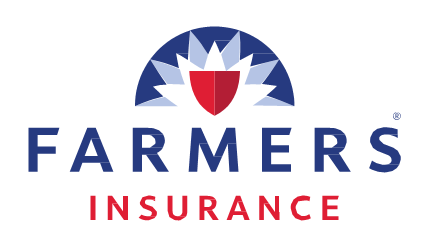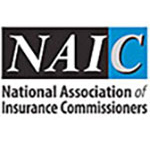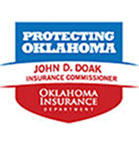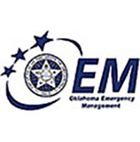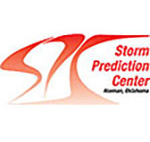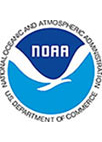Detailed Schedule
Tuesday, March 1
General Session 8:00 AM - 9:30 AM
Drones: The Future of Disaster*
With drone sales and usage increasing at an explosive pace, federal, state and local governments are scrambling to address privacy, security and safety concerns. Drones armed with remote sensing technology can be beneficial for activities such as search and rescue, damage assessment or evaluating hard-to-access areas, but the use of this technology by commercial businesses comes with restrictions and strict guidelines. This session examines safety and security issues and reviews the current state of affairs surrounding the legal use of drone technology, as well as considerations for consumption of the subsequent data.
Breakout Session One 9:45 AM - 10:40 AM
Tear Down or Repair? An Engineer’s Perspective*
Damage assessments are often a point of contention between insurance companies and consumers. During this session, you will hear from an engineer’s perspective the tell-tale signs that a structure has been irreparably damaged and review many real life examples.
Presentation MaterialsCatastrophic Tornado Losses Then and Now: Are You Prepared?*
This presentation will examine some of history’s most costly tornadoes from a catastrophe modeling perspective and study how a repeat of these events, in today’s society, might financially damage the insurance market. We will also take a look at the physical characteristics of previous tornadoes, examine changes in thunderstorm exposure, and explore how catastrophe models can help players across the insurance spectrum better understand and better prepare for the next big event.
Tale of Two Cities: Dealing with Chronic Flooding and How to Prepare for the Unexpected Flood
Austin, Texas is in the heart of �Flash Flood Alley� where a reported 75 percent of flash flood deaths occur on roadways. Because of the alarming numbers, city officials have taken a proactive approach to save lives and alert the community when dangerous flooding happens. On the other hand, other parts of the country are often drought prone and that�s why unexpected rainfall can occasionally catch city officials, residents and emergency managers� off-guard. May 31st, 2013 when a potentially deadly tornado moved toward Oklahoma City frightened residents sought shelter in drainage ditches only to be swept away in sudden flash floods leading to many deaths. During this session we�ll hear from officials with Austin and Oklahoma City on how to prepare for and respond to flash flooding. You�ll see real-life examples of when the unexpected flood has hit and learn what can be done in every community to prepare for the unthinkable.
Presentation Materials
Presentation Materials
Alley Cats: How El Ni�o Influences Tornado Alley and the Threat of Catastrophes
The on-going strong warm phase of the El Ni�o Southern Oscillation (ENSO), typical referred to as El Ni�o, has the potential to not only devastate the West Coast this winter with heavy precipitation and mudslides, but also have far reaching impacts across the globe. One of these impacts, the connection between El Ni�o and hurricane activity in the Atlantic Basin, has been widely discussed. However, much less is known about the connection to tornado activity in the United States. Could it have played a role in the below-normal tornado activity during 2015 severe weather season. This session will address the current science regarding El Ni�o's impacts on tornado activity and potential future applications in catastrophe models.
Summary of Significant Weather in 2015*
This presentation provides an overview of hazardous weather episodes impacting life and property within the United States during 2015. Selected events will be presented in quasi-chronological order and described with photos, maps, and loops of satellite and radar data. While many of the events selected for this talk captured the attention of the media and public, some of these events may have been forgotten as more substantial weather events occurred throughout the year. This review will highlight some of the "big stories", as well as smaller short-term events. The presentation will include descriptions of significant and deadly weather events of the past year including winter storms, tornadoes and floods. Along with the meteorological set-up for each event, a preliminary impact summary will also be provided.
Given the national scope and varied responsibilities of the Storm Prediction Center, high impact weather events, ranging from severe thunderstorm and tornado outbreaks to wildfires and winter storms, are analyzed and forecast regularly. These responsibilities provide the SPC forecaster with a unique opportunity to interpret data related to extreme weather across the nation. The availability of high-resolution archived datasets further provide for this type of informative presentation.
Breakout Session Two 10:55 AM - 11:50 AM
Standing Up for Consumers: A Discussion of Recent Legislative Changes for Public Adjusters*
In this session we will analyze how 2015 legislative changes in Oklahoma have clarified the duties and obligations of public adjusters from both a regulatory and public adjuster perspective. We’ll also dive into whether these changes could be taken to other states for enactment.
Presentation MaterialsPresentation Materials
Business Resilience: How to Get Business Interruption Right Before and After the Storm*
An effective enterprise risk management program includes recognition of both time element exposures and proper reported insurable values. Getting both right before the loss means no surprises when the unexpected occurs. Business owners need to be ready to prioritize actions and focus on the challenges in operating their business after a disruption. This session will focus on the time element coverage issues and how solid underwriting works hand in hand with a responsive claim process.
Presentation Materials
It's Messy: Sheltering Decisions and the Options Available*
In this presentation we pull from many sources, including our own research, to paint a complex picture of how people are currently sheltering from tornadoes in central Oklahoma. While some people are seeking refuge outside their dwelling, many public shelters have closed. Although some new shelters have opened, shelter-seeking in non-designated shelters has increased. People are seeking shelter at schools, hospitals, malls and other businesses that may not provide any more protection than the buildings they came from. We hope to shed some light into some of forces at work in this new era where more and more people are attempting to heed the advice of severe weather forecasts and warnings.
Presentation MaterialsSocial Media and #Disasters 101-It's Time to Tweet!
The use of social media before, during and after disasters has quickly proven to be one of the fastest and best ways of getting emergency information out to the public. As a result, having an effective social media strategy to support our crisis communications, emergency response, and business continuity plans is now a must for any credible company, organization and community.
As disaster planners, we have a responsibility to adopt and adapt to help us better respond to and prepare for disasters. The presenter will share with participants the evolution of social media during disasters, then will review the various steps and components required in developing an effective emergency social media strategy and/or plan. This session goes beyond just telling people they need to plan for social media - the presenter will review all the components required to build an effective social media plan.
In addition, recent lessons learned, best practices and tips will be shared with attendees on how to harness the power of social media before, during and after disasters.
An Overview of the Vortex-Southeast Program*
This presentation will provide a summary of the goals and plans for the VORTEX-Southeast (VSE) program. VSE is a research program authorized by Congress and led by NSF, NOAA and NASA that will focus on the unique physical, operational and social challenges presented by tornadoes in the Southeast United States. The presentation will include a discussion of planned projects for the spring of 2016 and a summary of the long term plans and goals for this program.
Presentation MaterialsGeneral Session 12:00 PM - 1:20 PM
Deadly Day in Dallas: A Rare Winter Tornado Hits the Metroplex
Most people don�t associate tornadoes with winter, but on December 27, 2015, 9 tornadoes hit the Dallas-Fort Worth area. Eleven people died and dozens more were injured. The tornado outbreak was the deadliest in north Texas in 90 years. KXAS Meteorologist Rick Mitchell watched the storm develop live and will be here to discuss the outbreak, the challenges associated with the storm and protecting a metropolitan area.
Breakout Session Three 1:40 PM - 2:35 PM
The Ever-Changing Technology in the Claims Process*
Does technology makes your life easier? In this presentation we will discuss the options and benefits of the latest industry technology and how it helps to close claim files more rapidly. We will also review case studies to prove how technology can improve proficiencies of existing systems during the claims process.
Presentation MaterialsAnswering the Call: Advanced Wind Resistance Structures*
Texas A&M; Engineering Extension Service (TEEX) is home to Texas Task Force 1, the most actively deployed federal search and rescue team in the country. After deployment to numerous tornado scenes including Moore, Oklahoma, it has become apparent there is a need for advancements in high-wind resistant structures. The Product Development Center (PDC) at TEEX began evaluating technologies, building codes, policies and the economics of advancing existing structures and shelters. As a member for the Texas A&M; University System, the PDC engaged the expertise of Dr. Pete Keating, Division Head for Construction, Geotechnical and Structural Engineering, Civil Engineering at Texas A&M; University who also serves as a structure specialist for Texas Task Force 1 to guide the testing of new technologies. During this session you will see the results of kinetic energy testing and real-life examples of structural failure.
Predicting the Unpredictable: Keeping People Safe From the Storm During Sporting Events, Concerts and Other Outdoor Activities
When you have 80,000 people packed into the football stadium the last things you want to deal with are lightning, strong winds, hail or tornadoes. During this session, Kevin Kloesel will discuss the risky business of weather prediction and the importance of having a severe weather preparedness plan in place for outdoor venues. Many times injuries could be if proper steps are taken ahead of the storm. Kevin is responsible for providing weather forecast and weather safety information to the OU Office of Emergency Preparedness before, during and after weather threats of all types on campus. Kloesel will discuss real-life scenarios as well as some of the preventive measures taken by the University to keep people safe.
Safe from the Storm: New Research and Developments in Tornado Protection*
During this session attendees will gain a better understanding of the dangers that tornadoes pose on our built environment and the lives within, as well as the latest research and developments in tornado protection provided by tornado shelters and safe rooms. This session contains three presentations from industry-leading organizations. FEMA will present on the latest guidance and requirements for storm shelters and safe rooms, as well as some success stories of safe rooms saving lives. Texas Tech University will discuss testing of storm shelters and components, and will show both failures and successful performances of tornado shelter doors when subjected to debris impacts in the Debris Impact Test Facility (DIF) at Texas Tech University. NIST will present on the creation of a new standard for wind speed estimation in tornadoes, a new standard for performance-based engineering design of buildings for tornado hazards, and the development of new tornado hazard maps for the United States.
Presentation Materials
Weather Gone Wild! Lessons Learned from the Spring �2015 Severe Weather and Flooding in Oklahoma and North Texas
Spring of 2015 brought a variety of wild weather to Oklahoma, keeping forecasters, the media and public safety officials very busy. This presentation will review some of the more significant local weather events from last spring, discuss how the National Weather Service dealt with some challenging situations, and share some valuable lessons learned.
General Session 2:50 PM - 3:50 PM
More than a Weather Girl: How Female Meteorologists are Breaking Barriers, Changing the Industry and Saving Lives
Being a meteorologist and predicting potentially deadly tornadoes isn’t a job for the faint of heart and some would argue it’s even harder for those that happen to be female. Get the forecast wrong and you’re liable to be labeled just a weather girl, but over the past several decades women are increasingly taking on the role of meteorologists. During this session we will discuss the strides women have made in the fields of science and meteorology as well as discuss issues that face everyone in the field such as forecasting, keeping people safe and how social media is changing everything.
Breakout Session Four 4:05 PM - 5:00 PM
The Rise of Property Drone Utilization for Insurance*
Learn about the history, current status and future possibilities for the use of drones by the insurance industry for property inspections in the claims and underwriting process. This informative presentation will share recent developments and plans from the FAA, NOAA and FEMA.This session will also take a look at the technology behind a successful unmanned aerial system (UAS), including remote sensing, camera applications, the subsequent processing of images and how those images can be incorporated into current claim and underwriting process. <
Presentation MaterialsMeasuring the Social Media Response*
This session will show the increasing ways social media is being used after disasters to aid in response, recovery and restoration. An overview of social media use by government offices, agencies and emergency response teams will highlight lessons learned, best practices, and the benefits of providing fast and accurate information online. An actuarial study of the impact of social media used by insurance-related industries (auto body shops, restoration companies, hospital systems, etc.) will present the growing ways consumers receive and use information. An overview from property safety experts will highlight the ways safety tips are used during response and recovery. A final discussion will note new horizons for social media that can be of growing benefit in disaster response.
Pipeline Safety and Disaster Response: The Role of Weather Forecasters in Readiness and Response
Natural disasters can damage significant parts of the energy infrastructure, including pipeline systems. This can complicate the response and multiply the damage. Oklahoma, often referred to as Tornado Alley, has seen millions of dollars in infrastructure damage in only the past five years. In Canadian County in 2011, a drilling rig was destroyed by a tornado while a natural gas processing plant experienced significant damage. In May 2013, an Oklahoma tornado left a trail of destruction including damage to a natural gas pipeline 53 miles southeast of Moore. This same storm resulted in record breaking floods, exposing pipeline in Oklahoma County. Most recently, between May 5, 2015 and June 4, 2015, Oklahoma experienced severe storms, straight-line winds, record rainfall and tornadoes, resulting in major damage to infrastructure. This presentation will highlight some of those incidents and the critical role forecasters provide to emergency responders for safe, effective handling of the situation.
Presentation MaterialsInformation Overload: How to Get and Stay Informed During Severe Weather
Getting and staying informed of severe weather has never been more possible than it is now, but with the huge amount of information sources it can also lead to mixed messages and a complete overload of information. Through a straightforward process of streamlining your weather sources, you can get the information you need to make critical decisions more efficiently
Living with Extreme Weather: An Integrative Approach
Despite substantial advances in technology and our understanding of the atmosphere, it has become clear in recent years that extreme weather (e.g., tornadoes, hurricanes, flash floods, straight-line winds, blizzards, hail storms) fundamentally represents a social and behavioral science challenge to society. Experience shows that physical science, engineering and technology alone cannot prevent hundreds of people from dying each year due to extreme weather events, or mitigate the substantial impacts on built infrastructure and the economy.
Presentation Materials
Presentation Materials
Presentation Materials
Wednesday, March 2
General Session 8:00 AM - 9:30 AM
A Weather-Ready Nation: Ready, Responsive, Resilient
NOAA’s Weather-Ready Nation is about building community resilience in the face of increasing vulnerability to extreme weather. The devastating impacts of extreme events can be reduced through improved readiness, which is why the Weather-Ready Nation initiative is so important. Through operational initiatives, NOAA’s National Weather Service is transforming its operations to help Americ respond. In the end, emergency managers, first responders, government officials, businesses and the public will be empowered to make fast, smart decisions to save lives and livelihoods. Building a Weather-Ready Nation requires the action of a vast nationwide network of partners including those attending this conference. Learn what you can do during this informative session.
No Presentation Materials Provided.Breakout Session Five 9:45 AM - 10:40 AM
Combating Property Insurance Fraud: The Ugly Side of Recovery*
Natural disasters bring out the best in people in many instances. Unfortunately, these events also bring out the worst in many people. This session explores the elaborate plans by individuals and groups to take advantage of the circumstances brought about by a natural disaster. Learn how to recognize and combat these situations before they become costly mistakes.
No Presentation Materials Provided.A Reinsurer's Perspective on Severe Convective Storms*
In recent decades, the economic and insured losses from hail, straight-line winds and tornadoes have been increasing at an alarming rate. In response, the reinsurance industry is taking a closer look at these events to better understand the risk. This presentation will discuss the challenges of risk assessment modeling, and how these models are used in practice within the reinsurance industry.
Presentation MaterialsAmerica's PrepareAthon! Moving Millions to Prepare: An Evidence Based Approach
Recent national surveys reveal that despite numerous efforts, Americans remain largely underprepared for disasters. Thus, the Federal Emergency Management Agency (FEMA) has created America’s PrepareAthon!SM, a grassroots campaign for action to increase the number of people who know the disasters most relevant to their community, know what to do to be safe and mitigate damage, practice these actions, and contribute to community resilience planning. This session will describe the campaign and provide information on the evidence-base for the hazard-specific guidance. Information will include results from the review of the research validation for individual protective actions for tornadoes and highlight findings from the annual household survey of those households who reside in areas that have experienced tornadoes. The review of the research for protective action guidance is designed to document the science base that validates the protective actions, to update hazard messaging, and to identify additional research needs. The survey is designed to track changes in the public’s knowledge, attitudes, and behaviors related to preparedness including preparedness for tornadoes.
No Presentation Materials Provided.Predicting the Unpredictable: Keeping People Safe From the Storm During Sporting Events, Concerts and Other Outdoor Activities
When you have 80,000 people packed into the football stadium the last things you want to deal with are lightning, strong winds, hail or tornadoes. During this session, Kevin Kloesel will discuss the risky business of weather prediction and the importance of having a severe weather preparedness plan in place for outdoor venues. Many times injuries could be if proper steps are taken ahead of the storm. Kevin is responsible for providing weather forecast and weather safety information to the OU Office of Emergency Preparedness before, during and after weather threats of all types on campus. Kloesel will discuss real-life scenarios as well as some of the preventive measures taken by the University to keep people safe. Challenges and lessons learned from the 2014 severe storms, tornadoes and flooding that impacted several Arkansas counties including Faulkner, Pulaski, and White Counties.
Advances in Understanding Winds in Tornadoes, Here and Abroad*
In the past two years, the tornado winds standards committee of the American Society of Civil Engineers has begun to develop the first standard of estimating wind speeds in tornadoes. The standard will improve the EF scale using the latest engineering and meteorological understanding of how tornadoes affect structures and trees. But the standard will go beyond upgrading the EF scale. It will introduce new methods of estimating wind speeds in tornadoes involving forensics engineering, radar, aerial and satellite platforms, tornado photogrammetry, in-situ observations and even the patterns of tree-fall made by tornadoes in forests. These methods will dramatically increase the amount of information that will be collected by the National Weather Service's Storm Data program and its users. This presentation will update you on where we may take these techniques in the standard and how they may affect all stakeholders that use the tornado climatology.
Breakout Session Six 10:55 AM - 11:50 AM
High Wind Protection for Homeowners: FORTIFIED Home� � High Wind Program*
The Insurance Institute for Business & Home Safety (IBHS) is introducing its new FORTIFIED Home��High Wind Program which has direct application for residents in tornado-prone areas. Learn how the building and retrofitting standards in this unique program can significantly narrow the path of tornado destruction by virtually eliminating damage from EF-0 and EF-1 tornadoes and strengthen homes against severe thunderstorms and straight line winds. This session will also explore the program’s construction strategies offered at all price points and through a combination of designation levels that build upon each other.
Presentation MaterialsSetting the Standard: New Building Codes for Tornado Resistance*
During this session we will discuss the development of the Moore Building Code which is in the process of being adopted as a state-wide option in Oklahoma. We’ll also discuss how the implementation of the code has progressed and how a tornado in Moore during March 2015 provided clues to increased resiliency.
No Presentation Materials Provided.OSHA's Role in Emergency Response*
When disaster strikes, OSHA isn�t typically the first government entity city managers and emergency managers consider calling, but during this session you will learn why OSHA should be one of the first contacts made. Worker injuries or fatalities could disrupt the entire response effort. The need for a rapid response to an incident increases the risk that personnel may be deployed with inadequate information about the safety and health hazards. When state, local, and/or federal assets are overwhelmed, the Worker Safety and Health (WSH) Support Annex can provide coordinated technical assistance to help protect response and recovery workers.
Targeted Warnings: Oklahoma City Revamps the Way Tornado Warnings Are Issued in an Effort to Prevent Warning Fatigue
Oklahoma City has approved a new Outdoor Warning Siren (OWS) policy as part of the city’s Warning Annex. Moving away from county-wide warnings the city will now issue warnings only to affected sectors. During this session the speakers will discuss why these changes were necessary and how the new warning system will be implemented.
Assessing Wind Speeds in Tornadoes Using a Fragility Framework*
In the EF-Scale, wind speeds in tornadoes are estimated by the observed damage. There is significant variability in both wind loads and the response of structures during failures such that failure-inducing wind speeds should be assessed via probabilistic methods. The presentation illustrates this approach using one of the key damage indicators � roof failures of wood-frame houses. The paper presents a fragility analysis for gable and hip roofs, based on data from (i) full-scale measurements on real houses at the �3 Little Pigs Projects� and (ii) wind tunnel tests at the Boundary Layer Wind Tunnel Laboratory. The presentation will discuss the assessment of tornadic wind speeds using this approach, as well as uncertainties in the analysis.
General Session 12:00 PM - 1:45 PM
The World in 2036: Risk Management and Insurance Implications*
This cutting edge session will explore the rapid development of computer software and hardware and the trends that we might see in the next 20 years. These projections are based on the exponential growth of technology in a wide variety of fields. Included will be an analysis of how these transformations may impact the risk management and insurance industry. The highly interactive session will examine three key revolutionary areas of technology--nanotechnology, robotics, and artificial intelligence. The main focus of the session will be to apply these three dynamic trends to various industries, such as construction, housing, energy, and transportation. After a brief discussion of upcoming trends for each of these industries, this “futuristic” session will delve into the risk management and insurance implications pertaining to each of the respective industries.
Presentation Materials

